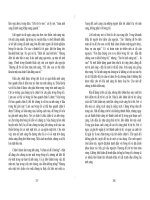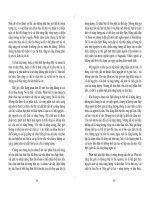The Sky at Night Phần 5 ppsx
Bạn đang xem bản rút gọn của tài liệu. Xem và tải ngay bản đầy đủ của tài liệu tại đây (1.83 MB, 19 trang )
61
P. Moore, The Sky at Night, DOI 10.1007/978-1-4419-6409-0_16,
© Springer Science+Business Media, LLC 2010
In August, there was a meeting of the Nomenclature Commission of the International
Astronomical Union, held in Prague. I could not go – particularly disappointing
because I was, for many years, a member of that Commission, and enjoyed working
with it. John Mason did attend, and on return told us what had been decided.
In 1930 Clyde Tombaugh, at the Lowell Observatory in Arizona, was carrying
out a systematic search for a planet moving beyond the orbit of Neptune using a
telescope which had been obtained specially for the purpose. The existence of
“Planet X” had been predicted by Percival Lowell, founder of the Observatory, from
slight irregularities in the movements of Neptune and (particularly) Uranus. It was not
long before Tombaugh found a body not far from the position given by Lowell. It was
Chapter 16
The Problem of Pluto
Clyde Tombaugh at the blink comparator (Credit: Lowell)
62 16 The Problem of Pluto
certainly moving far beyond Neptune, and was thought to be considerably larger
than the Earth. Naturally, it was assumed to be a planet, and it was named after the
God of the Underworld. (Conveniently, the symbol, PL, also fitted in with Percival
Lowell’s name.)
From the outset Pluto was an enigma. Its orbit was much more eccentric than
those of the other planets, and was also more highly inclined (17°). Its orbital
period was almost 248 years, and at perihelion it moved closer-in than Neptune; the
last perihelion fell in 1989, and between 1979 and 1999 its distance from the Sun
was less than that of Neptune, though its orbital inclination meant that there could
be no chance of collision. More worrying was the revelation that it was not only
smaller than the Earth but even smaller than our Moon and Triton, the main satellite
of Neptune. With a diameter of only 1,444 miles, it simply did not fit in with the
general pattern of the Solar System.
A satellite, Charon, was found in 1977; its diameter was more than half that of
Pluto, and its orbital period, 6.3 days, was the same as Pluto’s axial rotation period, so
that the two were tidally locked. To an observer standing on the surface of Pluto, Charon
would remain stationary in the sky. Could the pair be regarded as a double planet – and
in any case, could the diminutive Pluto really deserve full planetary status? There was
no general agreement, but the situation changed in 1992 when another planetary object
was found moving further-out than Neptune. For some reason or other it has never been
given a proper name, and is still known by its catalogue listing, 1992 QB1. It proved to
be the first of many. By now over a thousand Trans-Neptunians are known.
Much earlier, the existence of a swarm of asteroid-sized bodies in this remote
part of the Solar System had been mooted by the Dutch astronomer Gerard Kuiper,
and today we refer to the Kuiper Belt. (In fact, a less positive suggestion had been
made previously by Kenneth Edgeworth, in Ireland, and we still sometimes hear it
called the Edgeworth-Kuiper Belt.) Pluto is the brightest KBO (Kuiper Belt Object)
but it is not the largest. That distinction, so far as we know, belongs to Eris, which
is around 1,500 miles across, while others such as Quaoar and Varuna are compa-
rable. If Pluto is to be ranked as a planet, then so must Eris, Quaoar and the rest.
This seems to make no sense at all.
I wish I had been at that IAU meeting – I would have had a great deal to say!
The first official proposal was illogical; Pluto was to be retained as a planet and to
add three more: Charon and Eris together with Ceres, the largest of the main-belt
asteroids, even though Ceres is a mere 600 miles in diameter and Charon is the
satellite of Pluto (the excuse here, that the centre of gravity of the Pluto-Charon
system lies between the two bodies, was surely irrelevant; after all, the centre of
gravity of the Jupiter-Sun system lies above the solar surface). It was fairly clear
that the idea of keeping Pluto as a bona fide planet was due to sentiment and tradition.
The proposal was put to a general vote, and was defeated. The Commission then
came up with a new recommendation: A planet would be a body moving round the
Sun, massive enough to assume a spherical form, and to have cleared other bodies
out of its orbit. A dwarf planet would be in orbit round the Sun and to have assumed
a spherical form, but without clearly its orbit. All others would be lumped together
as Small Solar System bodies.
6316 The Problem of Pluto
This meant that the only accepted planets would be the familiar ones, from
Mercury to Neptune; nobody was likely to quarrel with that. The dwarf planets
would be Eris, Pluto and Ceres. The Committee’s proposal was accepted, but to me
it seems to muddy the waters. Why should Ceres be a dwarf planet, and Pallas, the
second main-belt asteroid, simply an SSSB? My suggestion would have been to
class all the minor bodies orbiting the Sun as “planetoids”. But the IAU is the
controlling body of world astronomy, and the die is cast.
Despite this, there is still considerable resentment about the demotion of Pluto.
It is now known to have three satellites, though the two new discoveries, Nix and
Hydra, are very small, and a certain amount of surface detail has been made out
with the Hubble Space Telescope; we will know much more in 2015 when, if all
goes well, the New Horizons space-craft will swoop past it. But insofar as its status
is concerned, we have to be logical rather than sentimental, and relegate it from the
Premiership of the Solar System. A planetoid, certainly; A remote asteroid, possibly;
A KBO, undoubtedly; But a planet it isn’t.
65
P. Moore, The Sky at Night, DOI 10.1007/978-1-4419-6409-0_17,
© Springer Science+Business Media, LLC 2010
Earth and Venus have often been regarded as twins. In so far as size and mass are
concerned this is true enough, but they are certainly not identical. Drs Fred Taylor
and David Rothery joined me to talk about the results from the latest mission there,
Venus Express.
During the early years of planetary space research Venus was regarded as a
prime target, because it did not seem to be really hostile – probably more welcom-
ing than Mars. Without going back 80 years to the ideas of Svante Arrhenius, who
believed Venus to be in a state similar to that of the Earth during the Carboniferous
Chapter 17
Non-identical Twins
Venus South polar from Venus express (Credit: NASA)
66 17 Non-identical Twins
Period, when the coal measures were being laid down and the lands were covered
with lush tropical vegetation, there seemed no reason to doubt that there might be
oceans, and that the climate was no more than tolerably hot. The probes of the
1960s and 1970s showed that this attractive picture was very far from the truth;
the atmosphere was made up chiefly of carbon dioxide, the surface pressure was
around 100 times that of the Earth’s air at sea-level, and the temperature was far too
high for advanced life-forms of our kind. Moreover, the clouds were rich in sul-
phuric acid. The U.S. Magellan orbiter surveyed the whole surface in detail, and as
a potential colony, Venus was ruled out; the main attention swung back to Mars.
Venus is a world dominated by vulcanism. There are lava-flows everywhere, and
there are craters together with deep valleys – though impact craters are rare; there is
overwhelming evidence that the whole landscape is “young”, and has been re-surfaced
in what we may call the relatively recent past. Whether the volcanoes are active
now is a matter for debate, but most people believe they are. Astronauts may well
be able to survey Venus from a safe distance, but certainly not yet awhile, and a
manned landing there is obviously quite out of the question. Venus may have been
named after the Goddess of Beauty and is a glorious sight when shining down in
the evening or morning sky, but conditions there are much more akin to the conven-
tional idea of the Inferno.
Now we have a new probe, Venus Express, which was launched on 9 November
2005 from the Baikonur Cosmodrome in Kazakhstan, by a Soyuz-Fregat rocket. It
reached Venus on 11 April 2006, after a journey lasting 150 days, and was put into
closed orbit round the planet. The orbit is eccentric; the distance from Venus
ranges between 156 and 41,000 miles (250–66,000 km) and is polar, with a period
of 24 h. Transmissions began immediately, and it was clear that the mission was a
complete success. It was scheduled to operate until May 2009, but was still working
perfectly in 2010. There is no lander; this is purely an atmospheric space-craft.
In addition to analysing the atmosphere, and measuring its temperature, Venus
Express carries a camera to operate in the visible, ultra-violet and near-infra-red
regions of the spectrum. One early surprise was that the polar vortex, already
known to exist, is like a hurricane with two “eyes” instead of one; nothing of this
kind has ever been known on Earth. There is also a magnetometer. This may seem
rather strange in view of the fact that Venus (unlike Mercury) has no magnetic field
strong enough to be detected, but the magnetometer should be able to study the
interactions between the solar wind and the uppermost part of Venus’ carbon-
dioxide “air”. An observer standing on the surface would be able to see the Sun
dimly through the clouds, and this leads on to a new theory about the Ashen Light –
that is to say the faint visibility of the night side of Venus, seen from the Earth
during the crescent stage. Its reality is not in doubt, but its origin has led to many
explanations, some plausible and others bizarre. In the nineteenth century Franz
von Paula Gruithuisen maintained that they were illuminations lit by the Venusians
to celebrate the accession of a new Emperor, while others believed that there were
electrical storms in the upper atmosphere, similar in nature to our aurorae but much
stronger. Of course, the “Earthshine” on the non-sunlit side of the Moon is familiar
6717 Non-identical Twins
enough, but Venus has no satellite. It is now believed that the cause is simply the
glow from the fiercely hot surface passing through the atmosphere.
Why are Venus and Earth so different? Surely it must be due to Venus’ lesser
distance from the Sun, 67 million miles against our 93 million. When the planets
were formed from the solar nebula, the two worlds may well have been similar,
starting to evolve along similar lines. The Sun then was not as powerful as it is
now, and probably both Venus and Earth developed seas, pleasantly warm but no
more. But as time went by, the Sun’s luminosity increased. Earth was at a safe
distance; Venus was not. The oceans boiled away and the carbonates were driven
out of the rocks, so that the atmosphere became thick with carbon dioxide. In a
very short time, astronomically speaking Venus was transformed into the inferno
of today; there was what may be called a “runaway greenhouse” effect. If life had
ever started there, it was ruthlessly snuffed out.
This sequence of events may or may not be accurate, but it does seem plausible.
Venus Express will help us to solve some of the problems which still puzzle us, but
no further specialised probes there have been funded as yet, though in 2008
Messenger is due to make some observations as it flies by Venus on its way to
Mercury. We may not be able to go there, and perhaps this will never be possible,
but we must surely be deeply interested in the Earth’s non-identical twin.
69
P. Moore, The Sky at Night, DOI 10.1007/978-1-4419-6409-0_18,
© Springer Science+Business Media, LLC 2010
Some time ago we did present a “musical” programme, but that was conventional
music on cosmic themes. Our last programme of 2006 was different – the music of the
stars themselves. I was joined by two leaders in the field of astroseismology, Drs Don
Kurtz and Yvonne Elsworth.
Chapter 18
The Sounds of the Stars
Coronal loops (Credit: NASA SOHO)
70 18 The Sounds of the Stars
The concept of the “Music of the Spheres” is far from new; it goes back to the
time of Pythagoras, and survived until a surprisingly late stage in astronomical history.
Kepler, for example, took it very seriously indeed. Today everyone knows about
radio waves from space, and there are people who fondly imagine that you can fit
up a receiver and listen to the Pole Star. Alas, this cannot be done. Sound waves
cannot travel in a vacuum, and there is very little air above a few tens of miles.
On Mars, where the atmospheric pressure is very low (less than 10 mbar, against
around 1,000 mbar at sea-level on Earth), even the most raucous auctioneer or
football referee would struggle to make himself heard. Sound-waves are pressure
waves, and depend upon a medium of some sort. The more rarefied the medium,
the higher the frequency of sound waves within it. Blow up a balloon filled with the
light gas helium, inhale some helium from the balloon, and your voice will be very
squeaky until you clear your lungs!
Helioseismology is the study of the propagation of acoustic (pressure) waves in the
Sun; it has turned out to be immensely valuable. The waves are generated by convection
near the Sun’s surface – that is to say, in the convection zone – and some of the
frequencies make the Sun “ring like a bell”. They reach the bright surface or photo-
sphere, and set up oscillations which we can detect by means of the familiar Doppler
principle. Even from close range, we would be unable to hear the solar music. Our ears
can detect sounds over only a limited range of frequencies. For example, not many
people can hear the squeaks of bats. (I can, but even now, when I am over 80, I still
have rather exceptional hearing.)
Explosive events at or near the Sun’s surface seem to trigger acoustic waves which
penetrate to a certain depth and are then bounced back when they encounter gas-
layers of different densities. A sort of “loop” forms, and the Sun would be a noisy
place – if we could hear it. The acoustic waves which bounce between the ends of the
loops produce a phenomenon known as a standing wave. The loops – essentially
magnetic phenomena – have been said to be analogous to a simple guitar string; pluck
the string, and you will hear a musical note. In the cosmic version, the sound waves
generated travel in the Sun and are linked with vibrations, which can be tracked.
Among the results from helioseismology is the revelation that the Sun spins in a
rather unexpected way. Of course, it has long been known that we are dealing with
differential rotation; at the equator, the rotation period is 26 days, while at the poles
the period is 9 days longer – to measure this, all we have to do is to track sunspots
as they are carried across the disk. Obviously, we cannot see the far side – the Sun
is not transparent! – but sound waves travel through the globe comparatively quickly,
and by studying them we can actually find out what is happening there. This is
important, because outbursts such as solar flares can not only cause disruption of
radio communications, but can also prove really dangerous to astronauts who are
outside the protective shield of the Earth’s atmosphere. If the new methods can
locate an active area on the far side, we can easily tell when the rotation will bring
it on to the Earth-facing side – and astronauts can make sure that they are protected.
It takes an acoustic wave only one and a half hours to travel right through the Sun,
and the inner regions of the Sun rotate in the way that a solid sphere would do.
7118 The Sounds of the Stars
The Sun is a normal star, and other stars may be expected to show the same
acoustic phenomena – and so they do, provided that they are not too hot or too cool.
On star which has been studied with particular care is the brightest component, of the
Alpha Centauri system. Alpha Centauri shines as the third brightest star in the sky,
inferior only to Sirius and Canopus; it is too far south to rise over Europe (our
two brightest stars are Sirius and Arcturus). At a range of 4.3 light-years, Alpha
Centauri is the nearest of our stellar neighbours; there are two bright components,
one rather more luminous than the Sun and the secondary (B) rather less so. The
third member, Proxima, is a dim red dwarf. Alpha Centauri A is of solar type, and
acoustically it seems to be very much the same.
The sounds are far too deep to affect the ears of beings like ourselves, but we
have enough information to work out what they would sound like if they could be
brought into our range. A comparatively small star will have a higher note, while a
huge, red supergiant such as Betelgeux in Orion will be deep and sonorous. An
interesting recording has been made from the sounds of the stars – it has been likened
to a rather obscure piece of classical music; every vibrating star makes its own
particular contribution.
One wonders what Pythagoras or Kepler would have thought!
73
P. Moore, The Sky at Night, DOI 10.1007/978-1-4419-6409-0_19,
© Springer Science+Business Media, LLC 2010
I have had many guests on the Sky at Night, but none more welcome than the British
astronaut Piers Sellers. You can imagine my reaction when the BBC scheduler,
Mr George Dixon relegated the programme to two o’clock in the morning. On the
previous month he had forgotten to schedule the Sky at Night at all, with the result that
the programme was transmitted a week late. Mr Dixon has been deleted from my
Christmas card list. At least he could not stop the Piers Sellers programme repeats on
BBC4 and BBC2. I will say no more!
The first space-man was a Russian, Yuri Gagarin. Since then, many astronauts
have flown; all nationalities have been represented, and that includes Britons. Our
first true astronaut was Michael Foale; the second was Piers Sellers, who did me
the honour of joining me for the first Sky at Night programme of 2007. He would
not have been able to join me for my first programme, in 1957, as he was then at
Chapter 19
Space-Man
Piers Sellers assembling the ISS (Credit: NASA)
74 19 Space-Man
the early age of two! Like Michael, he had to take American citizenship before
being allowed to start training, but he was born at Crowborough in Sussex; educated
at Cranbrook School in Kent, and graduated with degrees from the Universities of
Edinburgh and Leeds. It would be difficult to be more British than that – and his
wife is English.
He was selected by NASA in 1996, and flew his first mission in 2002, during
which he performed three space-walks. His second foray, in 2006, took him to the
International Space Station, and he was not long down when he broadcast with me
from my study. No guest could possibly have been more welcome, and this was also
a very special Sky at Night in another way; it was our 650th programme. Quite a
milestone.
Of course I had to ask him the standard questions, and rather than trying to quote
him verbatim, I will do my best to summarise what he told me. First, the Earth as
seen from space: “glorious – blue, and glowing”. One can see that our world really
is a huge ball in space. Everyone expects you to see stars, but you don’t, because
the Sun is blindingly bright, and staring at it is not to be recommended. Of course,
the sky is jet-black. When you are working in the shadow of the Station, there are
bright lights to make sure that you can see what you are doing. The only answer is
to find a secluded niche and turn out your helmet light.
Zero gravity – weightlessness – can be initially uncomfortable, but one soon
becomes used to it, and it becomes fun. Remember, the ISS is not like the early,
cramped space-craft; it is as roomy as a 747, and one can have the feeling of flying
around, though it is important not to forget inertia. The American section of the
station is a little like a workplace, while the Russian quarters are decidedly more
homely. Food? Well, it is palatable enough, and there can be unexpected delicacies;
the Russians, for example, are rather fond of jellied eels in aspic.
At present the crew of the ISS usually consists of three people, but this is
increased when a Shuttle arrives, and eventually there will be six resident astro-
nauts. Sleeping is not a problem, though care must be taken to avoid drifting
around; with no definite “up” or “down”, things can seem rather curious until you
get used to it. There is plenty of work to do in the Station – for example medical
tests and experiments, and researches into the behaviour of various materials under
conditions of zero gravity; for example it is easier to produce perfect crystals. Piers
has taken part in two missions so far, one lasting for eleven days and the other for
thirteen, and no doubt there will be more. I asked him whether he would like to pay
a visit to the Hubble Space Telescope, and he replied that he most certainly would,
but the astronauts for the next repair mission had already been selected. The HST
must be somewhere near the closing stages of its career, and its successor, the
James Webb Space Telescope, will be in a different sort of orbit, staying in one of
the so-called Lagrangian Points, where the gravitational pulls of the Earth and the
Sun cancel each other out. This means that the JWST will always be about a million
miles from the Earth – out of reach of any repair mission.
Piers currently holds the “space-walking” record from the ISS; he has made six
forays, adding up to a total of 42 h. He enjoyed them. Things were not very different
from what he had expected; for his first walk (more properly called EVA, Extra-
7519 Space-Man
Vehicular Activity) he had the impression of “flipping over” as soon as he emerged
from the hatch. Working during an EVA can be tiring; you move around by finger
pressure on the Station’s rail, but a jet-pack is carried in case of emergencies. I
asked him whether he had had any alarming experiences; he told me that on one
occasion he found that his oxygen was running low, so that he had only nineteen
minutes to re-enter the Station, but was not anything in the way of a crisis, as his
work programme had already been completed. The jet pack could actually be used
outside, but this was never done under normal circumstances. One more question
about space-walks: Is there anything you had to do that you didn’t want to do? His
reply: “Yes – come back inside!”
One point he made was that from space, you realise how shallow the layer of
atmosphere is. Thunderstorms give the impression of extending about half-way up
from the ground. Aircraft condensation trails over the Atlantic could be made out,
and the scene was always changing.
I could not resist asking Piers what he expected to happen in the foreseeable
future. I wondered whether he would be more accurate than Arthur Clarke was in
a very early Sky at Night programme (about 1960?) when he anticipated men on the
Moon before 1970, Lunar Bases by 1980 and the first trips to Mars well before the
end of the twentieth century. He was right about the first of these predictions, but
not, alas, the other two. (I was even less correct; I doubted whether men would
reach the Moon much before 1990.) According to Piers, the ISS will last until 2020
at least; its main function has been to show that habitable stations really are practi-
cable. Within ten years there could be the first Lunar Base, probably in Shackleton
Crater in the south polar region, where there are areas which are in almost perma-
nent sunlight. Before then, unmanned missions will have deposited equipment on
the surface ready for the astronaut’s arrival. The first journeys to Mars – between
2030 and 2035.
It is an alluring prospect. I will not be around to see it, but I have no doubt that
Piers will. He may now carry an American passport, but it is good to know that he
is British-born, British trained and thinks in a British way. I am proud to know him,
and proud to have welcomed him as a guest on Sky at Night.
77
P. Moore, The Sky at Night, DOI 10.1007/978-1-4419-6409-0_20,
© Springer Science+Business Media, LLC 2010
Mars was very much in the news at the start of 2007. Of course we had devoted
plenty of programmes to it over the years, but it seemed a good moment to bring
viewers up to date, and a major conference that was being held at the Jet Propulsion
Laboratory in California, so Chris went there and talked to some of the leading
astronomers, including Dr Steve Squyres.
Chapter 20
Exploring Mars
Spirit on Husband Hill (Credit: NASA)
78 20 Exploring Mars
In a way it seems strange to recall that our ideas about Mars have changed so
dramatically over the past few decades. Opinions oscillated wildly to and fro. First,
the polar caps were snowdrifts, then they were solid carbon dioxide, then they were
due to hoar-frost no more than a millimetre thick, then they were back to snowdrifts,
made of water ice mixed with CO
2
ice; the dark areas were old seabeds coated with
vegetation, then made up of hygroscopic salts which darkened with the arrival of
moisture-laden winds from the poles, then areas where the dusty covering had been
blown away, and then areas covered with lava-flows; the bright regions were dust-
deserts made of sand, then coloured minerals such as felsites and limonite; Phobos
and Deimos, the two midget satellites, were captured asteroids or (according to one
eminent Soviet astronomer) artificial space-stations, built by Martians. The best
advice was “Make up your own mind!”
For our February programme, there seemed no point in repeating what we had
said earlier; it seemed best to take a few salient points, and deal with them properly.
First, there is the all-important question about the nature of the polar caps, which,
remember, can be very extensive, and which wax and wane with the Martian seasons.
A life-supporting world must provide a few essentials, and in particular there must
be water in some form. If the caps had turned out to be carbon dioxide, we would
probably have had to abandon any ideas not only about Martians, but about even
the most elementary, single-celled organisms. Steve Squyres was quite definite. The
caps are of ordinary ice, and they are thick, so that from this point of view Mars is
much more co-operative than the Moon or, for that matter, Venus. Also, there is no
longer the slightest doubt that Mars was once much wetter and much warmer than
it is today. Rivers flowed – and the great volcanoes were active too. The Red Planet
was anything but changeless and sterile. Not that it is quite changeless at the present
moment; small new impact craters have been found, and there is strong evidence
that water occasionally gushes out from below the surface, running down through
valleys in crater-walls before evaporating or freezing. “If you were standing there
and saw a torrent of this kind coming toward you”, was one comment, “you’d probably
want to get out of the way”.
Many of the recent missions – Global Surveyor, Odyssey, Mars Explorer, Mars
Reconnaissance Orbiter and so on – have either searched for life, or have concen-
trated upon areas where it might be expected, assuming of course that it exists at
all, which is still a very open question. Britain’s Beagle 2 failed, alas; nothing was
heard from it after arrival, and though we are fairly sure that it did land, and it may
be done so either intact, or else in a shower of fragments. (There have been other
failures too, notably a very ambitious Soviet mission, and NASA’s Mars Observer,
while another US probe, Mars Climate Orbiter, was lost because of confusion
between Imperial and Metric units!). Up to now there have been no positive results,
and surface life may be ruled out because of radiation levels, but the jury is still
deliberating.
The NASA rovers, Spirit and Opportunity have been triumphantly successful,
and were still functioning perfectly when our February programme was transmitted –
long after the end of their expected lifetimes. Both have had problems; for instance
one of Spirit’s wheels is “dragging”, while Opportunity spent some time stuck in a
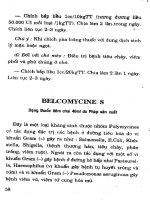

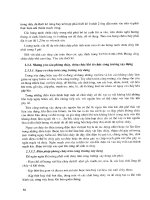

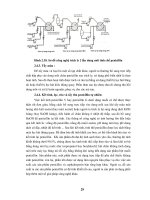
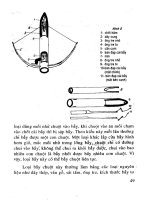
![[Đồ Án Điện Tử] Thiết Kế Máy Phát 3 Pha - Bộ Ổn Dòng phần 5 ppsx](https://media.store123doc.com/images/document/2014_07/14/medium_wlu1405275643.jpg)
![[Xây Dựng] Giáo Trình Cơ Học Ứng Dụng - Cơ Học Đất (Lê Xuân Mai) phần 5 ppsx](https://media.store123doc.com/images/document/2014_07/14/medium_mG1AAuxTob.jpg)
